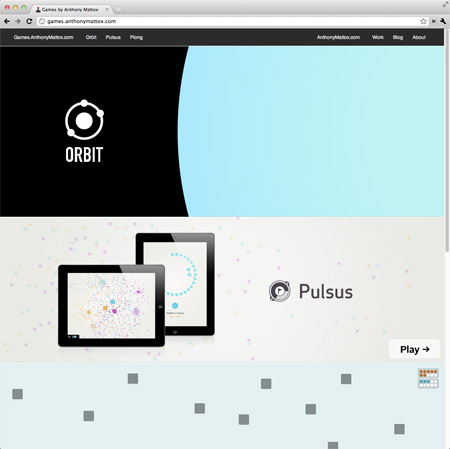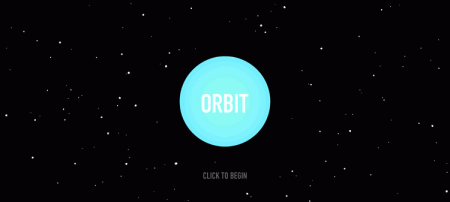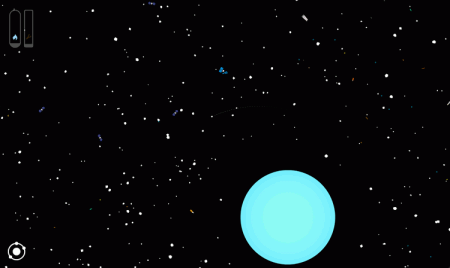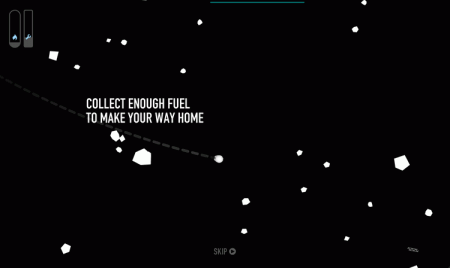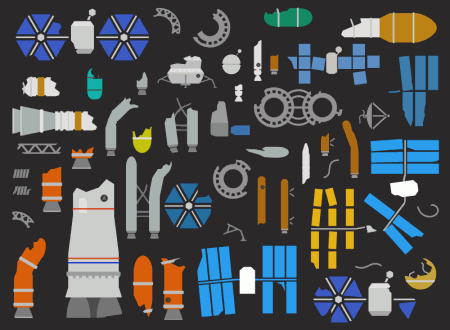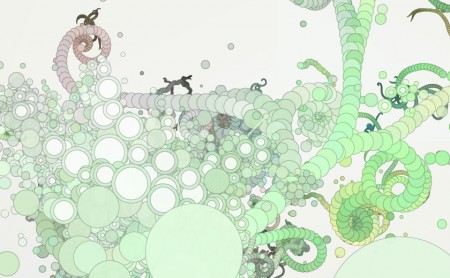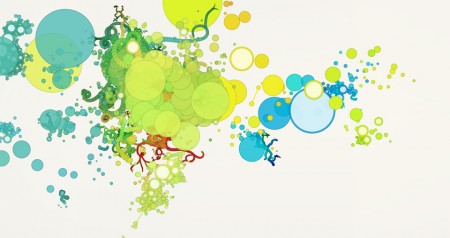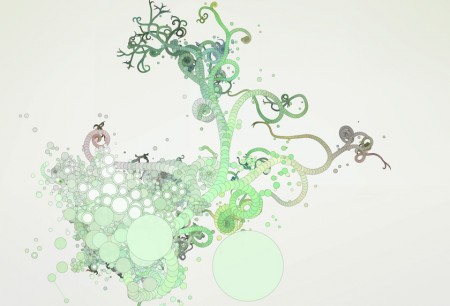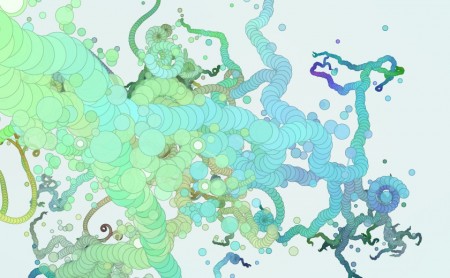I played around a bit with processing.js, an awesome bit of software that runs processing scripts in a browser using the HTML canvas element. I wanted to use it to create an animated full browser background for a web page. I couldn’t find any info on how to do this online, but came up with a solution. It may not be the most elegant, and performance starts taking a big hit at large sizes, but I wanted to share it in case anyone wanted to build on it or already has a better answer. I’ll also note that I haven’t tested this thoroughly.
Simply resizing the canvas element just stretches the rendered image so it needs to be changed within processing.
Since the processing script is essentially converted into javascript it’s possible to communicate between the processing script and other javascripts. So, I added an listener for the window resize event (using jQuery), which calls a function in the processing function to resize the canvas element.
The javascript looks like this:
// javascript (requires jQuery http://jquery.com)
var ProcessingInit = function() {
function resizeWindow() {
var pCanvas = Processing.getInstanceById('pCanvas');
pCanvas.resize($(window).width(),$(window).height());
}
$(window).resize(resizeWindow);
resizeWindow();
}
It’s wrapped in a function so that it can be called from processing when the application is started. ProcessingInit(); in the setup function. This makes sure the canvas element is fully instantiated before it tries to manipulate it.
It’s pretty straightforward on the processing side as well. That function simply calls the size function again. I’m not sure if that’s good practice, but it seems to work fine.
// processing
void setup() {
size(800,600);
ProcessingInit();
}
void resize(float X, float Y) {
size(X,Y);
}
Post Page »


